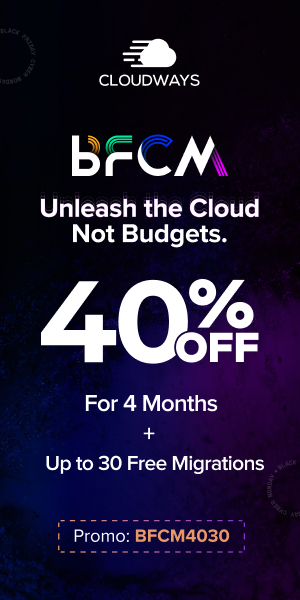Imagine a future where your money works for you, covering your bills and letting you choose how to spend your days—whether that’s exploring new places, pursuing a hobby, or simply relaxing without financial stress. This is financial independence, a state where your savings and investments generate enough income to support your lifestyle, freeing you from the need to work full-time. Building this kind of long-term wealth is achievable, no matter your income, with the right plan. In 2025, tools like budgeting apps and low-cost investment platforms make it easier than ever to start. This guide shares five practical steps to plan for financial independence and create lasting wealth, written in clear, simple language for those new to money management. From setting goals to growing income, these steps will help you build a secure financial future.
What Is Financial Independence?
Financial independence means having enough money to cover your living expenses without relying on a job. It’s about freedom—choosing to work because you want to, not because you have to. For example, if your annual expenses are $30,000, you might need $750,000 invested at a 4% withdrawal rate to generate that income. Unlike chasing a high salary, financial independence focuses on building wealth over time through smart habits. In 2025, technology and opportunities like online investing or side hustles make this goal accessible, even for beginners with modest incomes.
The Importance of Planning for Long-Term Wealth
Planning for financial independence is like building a house—you need a blueprint to ensure it stands strong for decades. A solid plan helps you save, invest, and grow income systematically, creating wealth that lasts. In 2025, economic factors like inflation or market shifts make planning crucial to stay ahead. By starting early, you leverage time and compounding to build wealth faster, whether you earn $25,000 or $100,000 a year. The steps below are designed to help beginners create a plan that leads to financial independence and lasting prosperity.
Five Steps to Plan for Financial Independence
These five steps are like pieces of a puzzle, fitting together to form a clear path to financial independence and long-term wealth. Each is simple, beginner-friendly, and tailored for 2025’s opportunities.
Step 1: Set Clear Financial Goals
Think of your financial goals as a destination on a map. Define what financial independence looks like for you—perhaps living on $2,500/month ($30,000/year) without a full-time job, requiring $750,000 invested. Break this into smaller milestones, like saving $5,000 in 2025 or building a $100,000 portfolio in 10 years. Write your goals in a notebook or app like Notion, including specific amounts and timelines, and review them monthly. Clear goals guide your decisions, keeping you focused even on a low income.
| Financial Goal Example | Details |
|---|---|
| Annual Expenses | $30,000 |
| Investment Needed | $750,000 (4% withdrawal rate) |
| 2025 Milestone | Save $5,000 |
| Long-Term Timeline | 20 years (2045) |
Step 2: Craft a Budget to Maximize Savings
A budget is your tool for directing money where it counts. Use a simple 50/30/20 structure:
- 50% for essentials: Rent, groceries, utilities
- 30% for wealth-building: Savings, investments, debt repayment
- 20% for wants: Hobbies, dining out
In 2025, apps like YNAB make budgeting straightforward. For example, cutting a $15 monthly subscription saves $180 a year, which can be invested. On a $40,000 income ($3,333/month), this allocates $1,667 to essentials, $1,000 to wealth-building, and $666 to wants. Even on a $25,000 income, saving $50/month by trimming small expenses builds a foundation for wealth.
Step 3: Establish a Financial Safety Net
A safety net, or emergency fund, protects your wealth by covering 3-6 months of expenses—$6,000-$12,000 for $2,000 monthly costs—in a high-yield savings account at 4% interest in 2025. This prevents you from selling investments during emergencies, like medical bills. Start with $25/month; $25 at 4% grows to $1,500 in five years. On a low income, even $10/month adds up, ensuring your plan stays on track while you build long-term wealth.
Step 4: Invest for Steady, Long-Term Growth
Investing is like planting seeds for a future harvest. Low-risk options like index funds or ETFs offer consistent growth. In 2025, platforms like Vanguard let you invest $50 in S&P 500 index funds, averaging 8% returns. For example, $100/month at 8% grows to $122,000 in 15 years, generating $4,880/year at a 4% withdrawal rate. The financial independence financial independence make1m.com millionaire life relies on steady investing to create wealth that supports your goals. Automate monthly contributions to stay disciplined, even with a small budget.
| Investment Options | Risk Level | Platform | Starting Amount |
|---|---|---|---|
| S&P 500 Index Fund | Low | Vanguard | $50 |
| ETFs | Low | Fidelity | $50 |
| REITs | Low | Fundrise | $10 |
Step 5: Build Passive Income Streams
Passive income—money earned with minimal effort—is a cornerstone of financial independence. It’s like setting up a small engine that generates cash over time. In 2025, consider:
- Dividend Stocks: $1,000 at 3% yields $30/year (Schwab).
- Digital Products: A $10 e-book sold 50 times earns $500 (Gumroad).
- Affiliate Marketing: $5 per sale via a blog could earn $100/month (Amazon Associates).
On any income, start with one stream, like a $10 digital template on Etsy, and reinvest earnings to grow more. For example, $150/month in passive income covers small expenses, reducing your reliance on work and building wealth faster.
Integrating the Steps for Long-Term Wealth
These steps work together like gears in a clock, creating a smooth path to financial independence. Start with clear goals to stay focused, craft a budget to save $100/month, build a $1,000 emergency fund, invest $50/month in an index fund, and create a $50/month passive income stream. On a $35,000 income, this could build a $12,000 portfolio in five years, generating $480/year. Over 20 years, it could reach $200,000, covering $8,000/year in expenses. Consistency turns small actions into lasting wealth, no matter your income.
| Wealth-Building Progress | Step | Year 1 Goal | Year 5 Goal |
|---|---|---|---|
| Budget | Save $100/month | $1,200 | $6,000 |
| Emergency Fund | $25/month | $300 | $1,800 |
| Investments | $50/month | $600 | $3,600 |
| Passive Income | $50/month | $600 | $3,000 |
Tools to Streamline Your Plan
In 2025, technology simplifies your journey:
- Budgeting Apps: YNAB or Mint to track expenses.
- Investment Platforms: Vanguard or Fundrise for affordable investing.
- Passive Income Platforms: Gumroad or Amazon Associates for income streams.
- Learning Resources: Books like The Simple Path to Wealth or X finance groups for tips.
These tools make planning easier, letting you focus on wealth-building, even on a modest income.
Keeping Your Plan on Track
Stay focused with these habits:
- Monthly Check-Ins: Review your budget and investments using apps.
- Start Small: Save $10 or invest $20 to build momentum.
- Automate Finances: Set up $50/month transfers to savings or investments.
- Learn Continuously: Read one finance article weekly to stay sharp.
First Moves in 2025
- January: Set goals, budget to save $50/month, cut a $10/month expense.
- June: Start $20/month emergency fund, invest $30/month.
- December: Create a $10 digital product, aim for $50/month passive income.
Growing Wealth Over Time
As your plan progresses, scale up your efforts. Increase savings from $100 to $200/month by 2026, or add a second passive income stream like affiliate marketing ($50/month). By year five, you could have $15,000 invested and $100/month in passive income. By year 20, with steady effort, you might reach $500,000, generating $20,000/year—covering a modest lifestyle. Reinvesting passive income into new streams builds wealth faster, even on a low income.
The Power of Financial Knowledge
Learning about money strengthens your plan. In 2025, read Your Money or Your Life or follow X finance creators to learn about tax breaks or investing. A $25 course on digital products could help you earn $500/year. Knowledge helps you avoid pitfalls, like risky investments, and optimize your strategy for long-term wealth.
Why Planning Works for Any Income
Financial independence isn’t about earning a fortune but managing what you have. A $30,000 earner saving $100/month at 8% can reach $122,000 in 15 years, while a $80,000 earner spending everything stays stuck. In 2025, low-cost tools and opportunities make it possible for anyone to build wealth with discipline and a clear plan.
Conclusion
Planning for financial independence builds long-term wealth by setting clear goals, budgeting wisely, creating a safety net, investing steadily, and growing passive income. Start today: save $15, invest $25, or create a $10 digital product. With consistent effort and 2025’s tools, you can craft a future where money supports your dreams, giving you the freedom to live life on your terms, no matter your income.







